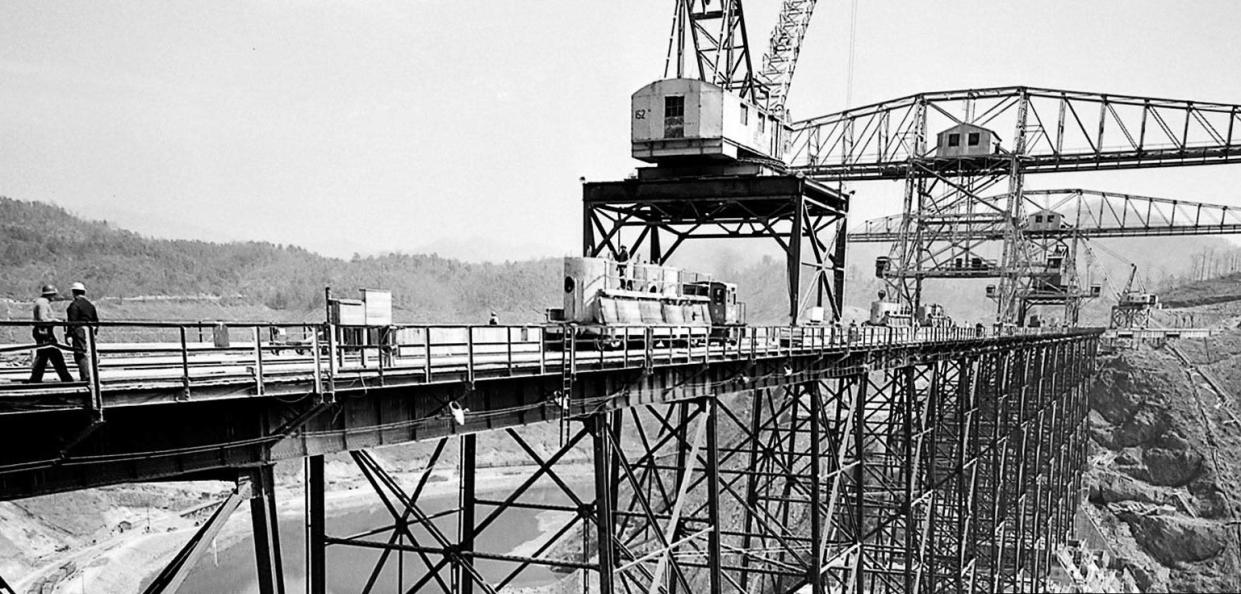The Largest Holder of Native American Human Remains is Preparing to Return Thousands of Indigenous Ancestors

The single-largest holder of Native American human remains—a federally-owned power company in Tennessee—is taking steps to complete the decades-long repatriation of more than 14,000 Native American ancestors who were unearthed in dam construction projects across the Tennessee valley from the 1930s through the 1970s.
The Tennessee Valley Authority (TVA) is a federal agency created by Congress in 1930 to deliver electricity to Tennessee and six surrounding states. Nearly a century ago, in preparation for its construction of large dams to prevent the valley from flooding, TVA partnered with archeologists from local universities to conduct salvage archeology and “remove everything of cultural nature,” Meg Cook, an archeologist and NAGPRA specialist for TVA, told Native News Online.
In 1990, Congress passed legislation—the Native American Graves Protection and Repatriation Act (NAGPRA)—that directs federal agencies and museums with possession or control over holdings or collections of Native American human remains and funerary objects to inventory them, identify their geographic and cultural affiliation, and notify the affected Indian tribes or Native Hawaiian organization.
But TVA—along with other institutions across the country—took 21 years to culturally affiliate ancestors and begin returning them to their present-day tribal nations. The TVA didn’t return any ancestors until 2011, after they were specifically called out in a Government Accountability Office report that noted that “almost 20 years after NAGPRA, key federal agencies still have not fully complied with the act for their historical collections acquired on or before NAGPRA’s enactment.”
“There was a lot of contemplation and time spent in the past on cultural affiliation, and picking the exact correctness of the affiliation,” Cook said. “We're just… broadening it, because tribes are able to make those determinations on their own.”
Since 2011, TVA has published a total of 67 notices of inventory completion and returned a total of 9,277 human remains and 119,630 associated funerary objects to their respective tribal nations, according to federal documents.
But this week, TVA abandoned its piecemeal approach to publishing notices of inventory completion by rolling the remaining 4,871 ancestors in their possession—from different states, and held by different museums—into a single notice.
“They could have piecemealed this out, like they had been doing in the past,” said Melanie O’Brien, the National NAGPRA Program manager. “But TVA made the decision to change their approach and to just complete the work— the administrative regulatory process for all of these ancestors—by publishing this one notice.”
In its notice, TVA broadly affiliated the ancestors and their belongings with dozens of tribal nations with ancestral homelands in Alabama, Kentucky, and Tennessee.
“We have broadly culturally affiliated, and now we want to rely on more consultations [for tribes] to tell us who is taking the lead, and how we can best meet [their] needs when it comes to preparing for reinterment,” Cook told Native News Online.
The broad cultural affiliation allows tribes to officially move forward with a request for repatriation. "Requests for repatriation may be submitted by (1) any one or more of the Indian Tribes or Native Hawaiian organizations identified in this notice [or] (2) any lineal descendant, Indian Tribe, or Native Hawaiian organization not identified in this notice who shows, by a preponderance of the evidence, that the requestor is a lineal descendant or a culturally affiliated Indian Tribe or Native Hawaiian organization," the notice reads.
TVA’s wholesale approach to cultural affiliation can serve as an example for other Federal agencies and museums, which still hold the more than 100,000 Native American ancestors reported under NAGPRA, said O’Brien.
“The TVA notice demonstrates that the process for repatriation can be completed effectively and efficiently under the existing regulatory framework,” O’Brien told Native News Online.
“This notice also reflects the Department of the Interior's stated goals in proposing regulatory changes last fall. The proposed regulations would remove the burden on Indian Tribes and Native Hawaiian organizations to initiate the repatriation process and add a requirement for museums and Federal agencies to complete the regulatory process within a set timeframe. With this notice, TVA has completed the regulatory process for more than 14,000 individuals, the largest collection of Native American human remains reported under NAGPRA.”
Although they’ve officially completed their paperwork for NAGPRA, TVA staff told Native News Online that their work is not done.
“We're not saying that we're done just because we may have completed the paperwork for NAGPRA,” Marianne Shuler, an archeologist and tribal liaison at TVA told Native News Online. “We’re probably still going to be working for a number of years to work out all the details with the tribes on how they want these individuals prepared and treated until [they] can rebury them.”
EDITOR'S NOTE: The story has been updated to reflect the proper number of states that the TVA delivers electricity to.
About the Author: "Jenna Kunze is a staff reporter covering Indian health, the environment and breaking news for Native News Online. She is also the publication's lead reporter on stories related to Indian boarding schools and repatriation. Her bylines have appeared in The Arctic Sounder, High Country News, Indian Country Today, Tribal Business News, Smithsonian Magazine, Elle and Anchorage Daily News. Kunze is based in New York."
Contact: jkunze@indiancountrymedia.com

